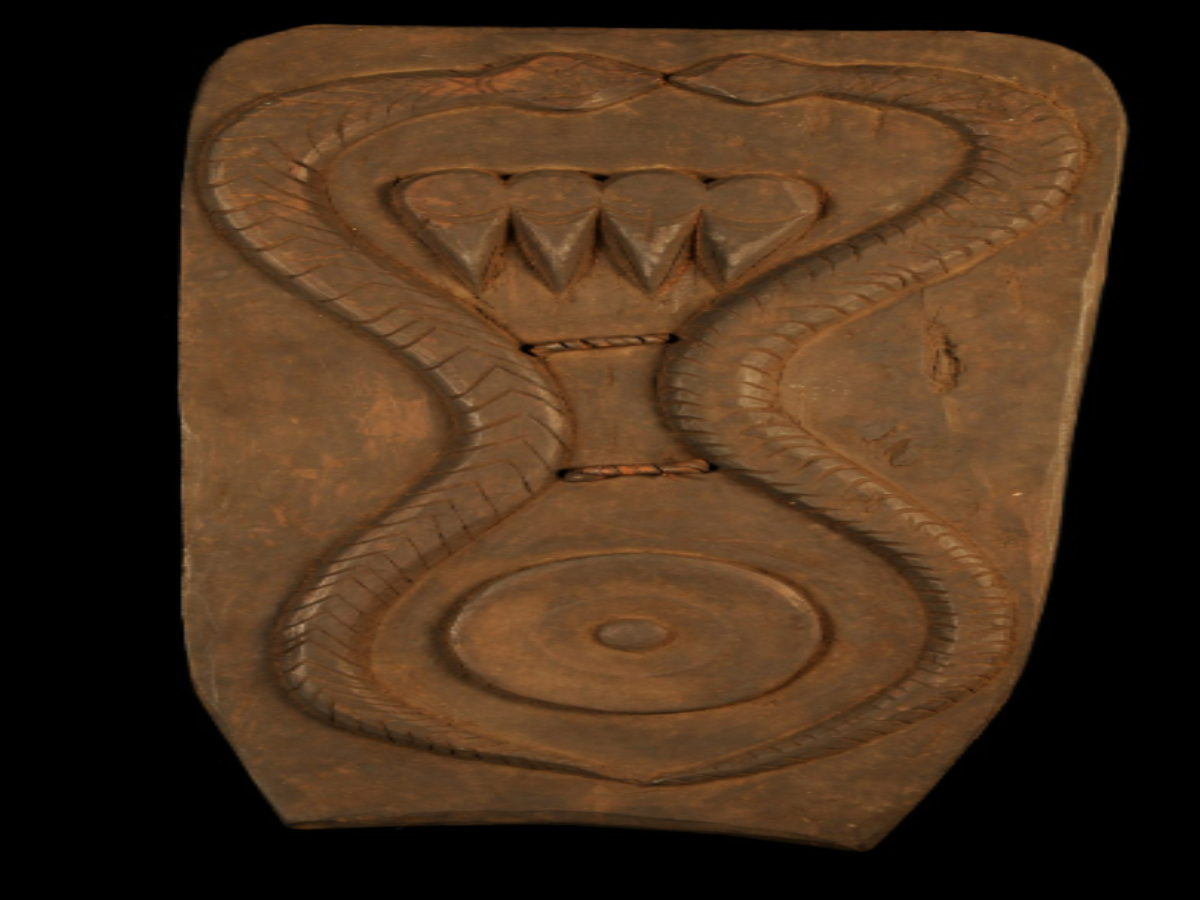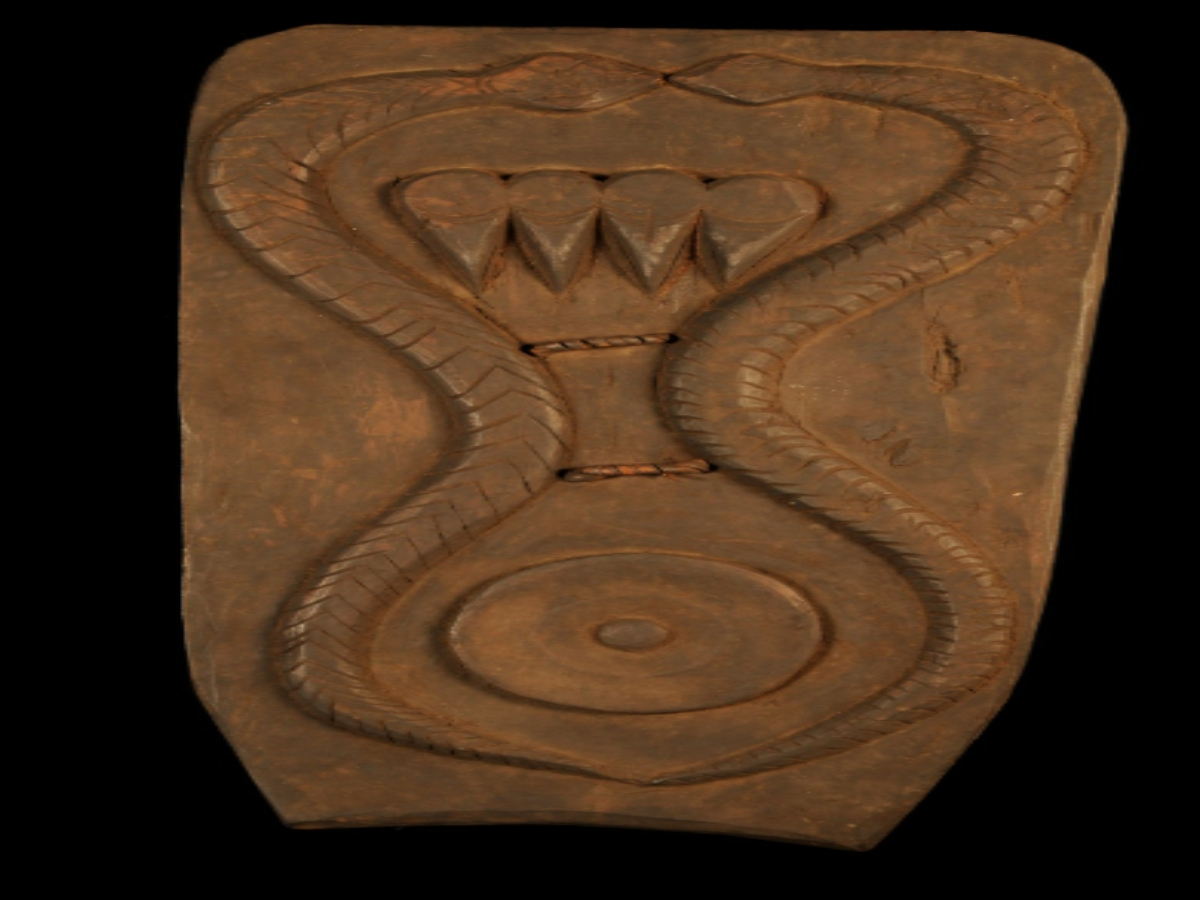State
Tribe Name
Art Type
short description
The Sema Naga tribe, or the Sümi Nagas as they are sometimes called, mostly reside in the Zünheboto district of Nagaland and profess a rich tradition of warriors and symbolic art. Their traditional wooden shield is one of the most astonishing artifacts from this culture; it is a truly functional object used in practice as well as a ceremonial one. The rectangular shield is made of an extremely dense hardwood with black paint, a color very closely linked to notions of strength, mystery, and protection. More than a piece of armoring, it functions as a canvas for the cultural symbolism of the Sema. Carved on the dorsal surface of the shield are two snakes artfully engraved, perhaps representing protection, vigilance, or a lineage spirit.
Thumbnail

Filter Postion
Left
Filter Background
Off
Theme
Filter Header Image

content
Image

description
The Sema Naga tribe, or the Sümi Nagas as they are sometimes called, mostly reside in the Zünheboto district of Nagaland and profess a rich tradition of warriors and symbolic art. Their traditional wooden shield is one of the most astonishing artifacts from this culture; it is a truly functional object used in practice as well as a ceremonial one. The rectangular shield is made of an extremely dense hardwood with black paint, a color very closely linked to notions of strength, mystery, and protection. More than a piece of armoring, it functions as a canvas for the cultural symbolism of the Sema. Carved on the dorsal surface of the shield are two snakes artfully engraved, perhaps representing protection, vigilance, or a lineage spirit.
Immediately beneath the snakes are the engravings of bird beaks, symbolizing agility, freedom, or messages from the spirit world—all attributes frequently referenced in tribal myths and oral traditions. The engraving of the gong may indicate alertness or the summon for battle and ceremony. The ventral side of the shield is fitted with a handle made from twisted cane strips, which is used by the warrior under the surface of combat as well as during ritual dances. The handle serves a dual purpose-it is functional and is a tribute to the tribe's craftsmanship in cane weaving and utilization of natural products. Thus, the shield embodies the connection of the Sema Naga tribe to warfare, nature, and spirituality, thereby representing identity, defense, and artistic legacy.
Immediately beneath the snakes are the engravings of bird beaks, symbolizing agility, freedom, or messages from the spirit world—all attributes frequently referenced in tribal myths and oral traditions. The engraving of the gong may indicate alertness or the summon for battle and ceremony. The ventral side of the shield is fitted with a handle made from twisted cane strips, which is used by the warrior under the surface of combat as well as during ritual dances. The handle serves a dual purpose-it is functional and is a tribute to the tribe's craftsmanship in cane weaving and utilization of natural products. Thus, the shield embodies the connection of the Sema Naga tribe to warfare, nature, and spirituality, thereby representing identity, defense, and artistic legacy.
Image Mode
landscape
promoted
On
Verified
Off
